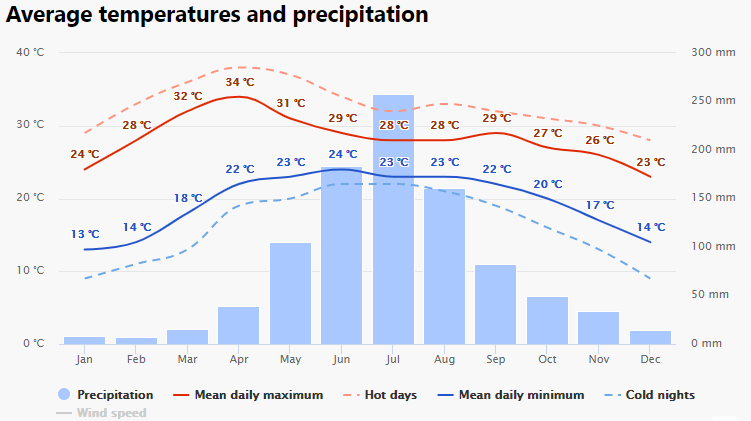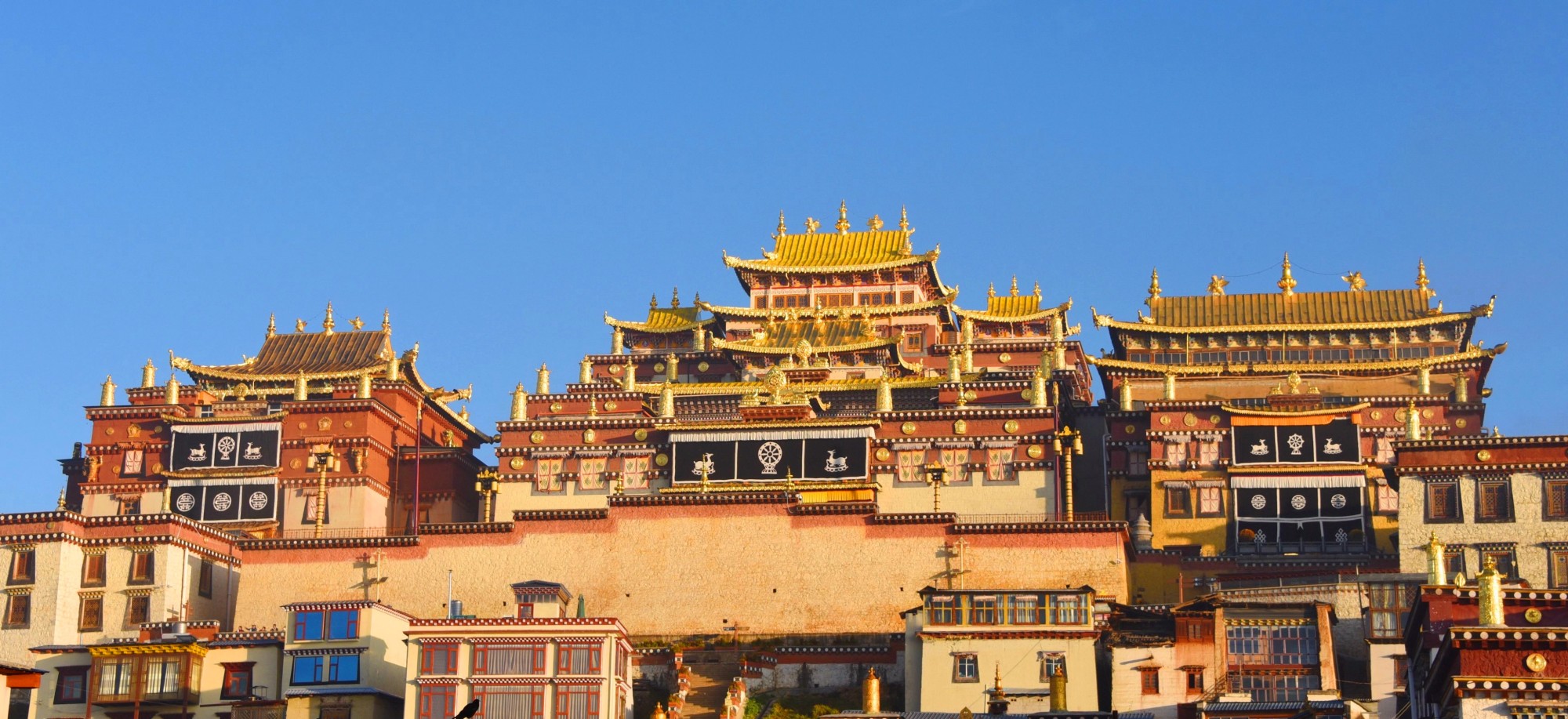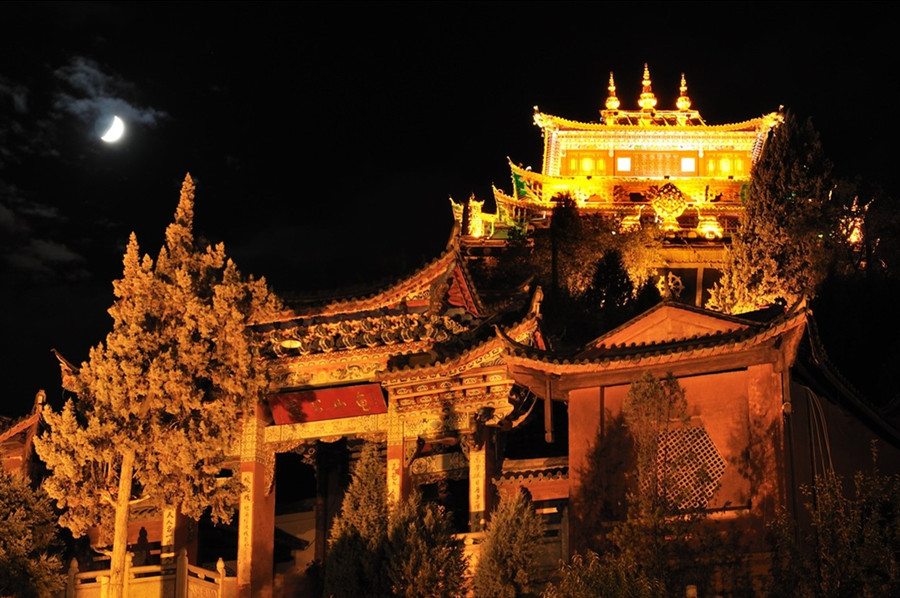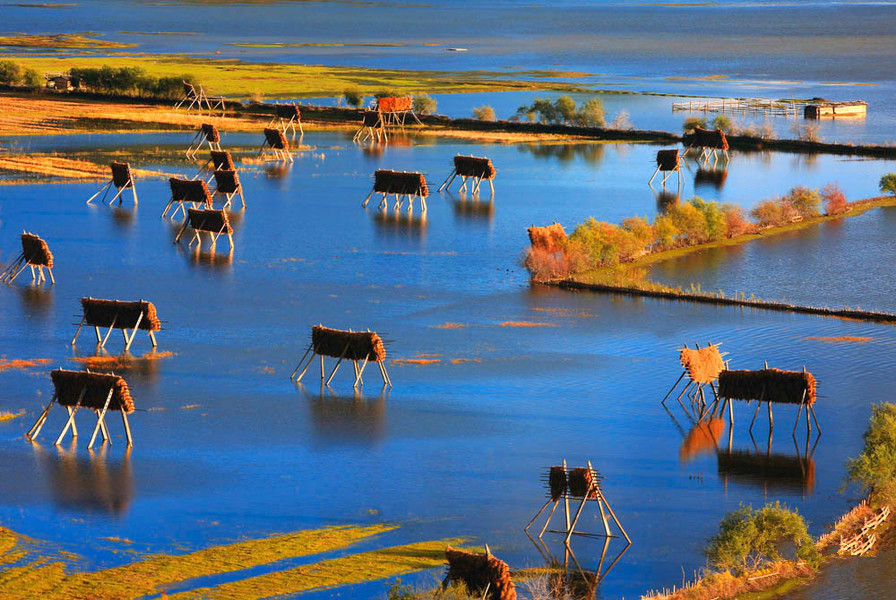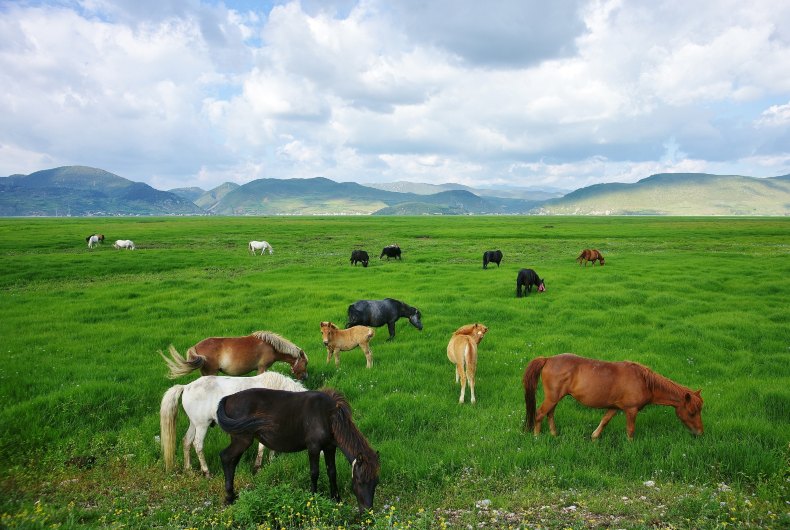
Shangri-La Climate
The information on Shangri-la climate could be helpful for preparing a Shangri-la travel. Shangri-la is about 3300 meters above sea level, and belongs to plateau humid climate. The climate changes little among the four seasons, but the temperature varies greatly between daytime and night. The temperature can be more than 30℃ on sunny days. However, in the morning and evening, people may feel as cold as winter. So, visitors should take their coats with them when visiting Shangri-la.
Shangri-la Weather and Climate
Shangri-la Climate Features
Shangri-la city is located in high altitude and low latitude area. The climate changes with the elevation, and there are six climatic zones in succession. It is a typical "three-dimensional agricultural climate" with the following climatic characteristics:
- Monsoon Climate: Subject to the alternating control of southwest monsoon and south branch westerly jet stream, the dry and wet seasons are distinct. There are many rainy days from June to October, with rainfall accounting for about 80% of the annual precipitation, forming a wet season. From November to May, there are many sunny days, sufficient sunshine and large evaporation. The rainfall accounts for about 20% of the annual precipitation, forming the dry season.
- Three-dimensional Climate: Within the territory, there are towering snow mountains and deep valleys, and the climate changes with the elevation. From the Jinsha river valley with an altitude of 1503 meters to the Haba snow mountain with an altitude of 5309 meters, there are six climatic zones successively, namely, the river valley north subzone, the warm temperate zone, the temperate zone, cold temperate zone, alpine subfrigid zone and alpine frigid zone.
- Highland Climate: The average altitude of Shangri-la plateau is 3450 meters. It is rich in solar radiation energy all year round, and the annual range of temperature is small. There is no summer all year round, with an average temperature of 5.5℃. However, the atmospheric transparency is high, the solar radiation is strong, the daytime temperature increases intensely, the night temperature drops fast, the daily temperature range is large, and the daily temperature range in the dry season can reach 30℃.
- Topographic Microclimate: The terrain of Shangri-la is low in the south and high in the north. In the south, influenced by warm and wet air flows, the precipitation is relatively abundant and the climate is humid, while in the north, it is relatively dry. The terrain structure of Shangri-la is complex, with various climatic types interlaced. Within the same climatic vertical belt, there are forest climate, grassland climate, lake basin climate and other small topographic climates, forming the climatic characteristics of "different climates at every other distance".
Shangri-la Weather Graphs by Month
Shangri-la Temperature
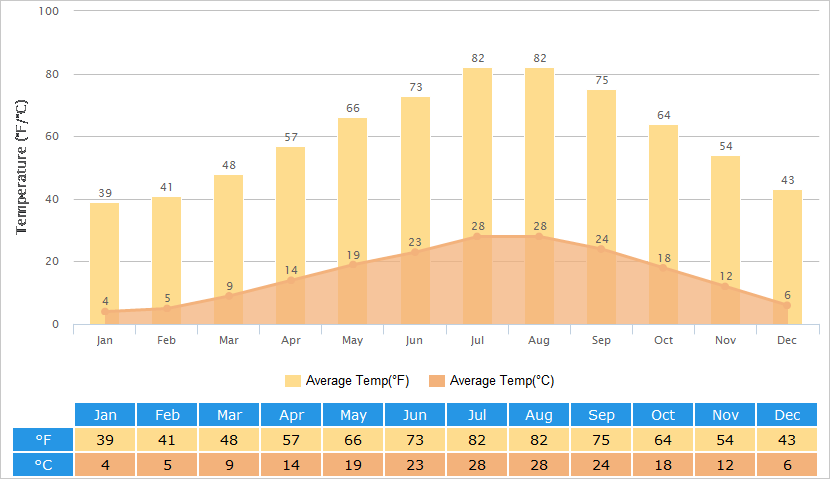
Shangri-la Rainfall
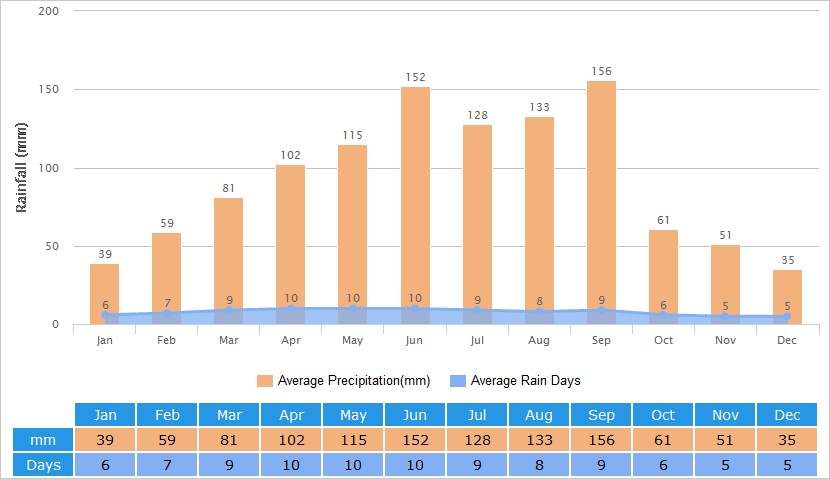
Shangri-la Weather and Climate by Month
Four Seasons of Shangri-la and What To Pack
Spring(March-May)
- Weather Feature: The temperature slowly rises, from cold to mild, ranging from an average of 4℃ to 12℃.
- What to Bring: Wear sweaters and coats, and dress in layers to adapt to the large temperature difference.
- Recommended Tour Activities: Enjoy the full bloom of azalea and wild flowers, visit charming Pudacuo national park.
Summer(June-August)
- Weather Feature: June to August is the rainy season, and Shangri-la has the highest temperature at this time. The temperature is 10-19°C.
- What to Bring: Light clothes for the daytime and warm clothes for the night. Remeber to bring an umbrella, hat, sunglasses and sunscreen. The roads are bad on rainy days. You'd better check the weather before your Shangri-la travel.
- Recommended Tour Activities: Enjoy various flowers on the meadows, besides, Tiger Leaping Gorge is most magnificent at this time.
Autumn(September-November)
- Weather Feature: The average temperature is between 18-2°C. As autumn goes on, the weather gets colder and drier.
- What to Bring: Long-sleeved clothes and warm coat are needed.
- Recommended Tour Activities: Tiger leaping gorge hiking and Haba snow mountain climbing.
Winter(December-February)
- Weather Feature: It's very cold in winter. The temperature is between -10- 10°C. If it snows, the temperature may drop below 0°C in the morning and evening.
- What to Bring: Thermal underwear, sweaters, thick coat/down jacket, gloves, scarf, and warm hat.
- Recommended Tour Activities: Visit Songzanlin monastery, and watch snow-covered landscape and black-necked crane
Best Time to Visit Shangri-la
Shangri-la is more than 3,000 meters above sea level, enjoying a plateau humid climate. The temperature difference between morning and evening is large. No matter what season you go to Shangri-la, you should prepare a warm coat. May to October is the best time to Shangri-la, at that time, the galsang flowers are blooming and the meadow is evergreen, full of artistic conception.
- May- June: The end of spring and early summer is the most beautiful time of Shangri-La because of the full bloom of azalea (but the bloom time may delay along with the change of weather). In the middle of June, there are wild flowers in blossom, such as irises.
- July- August: All kinds of wild flowers bloom on the meadows. The tiger leaping gorge is most magnificent during the rainy season.
- September- October: In autumn, Shangri-la is in rich colors, which is quite suitable to photography.
- November-December: In early winter, Shangri-la is in single color, and the weather is cold. Mainly for snow scenery, you can also see black-necked crane.
See When is the Best Time to Visit Tiger Leaping Gorge.
Avoid Public Holidays in China
Try to avoid the public holidays of China, such as May Day Holiday(May 1-3), National Day Holiday(October 1-7), Spring Festival Holiday(Usually early February), Qingming Festival(in early April), Dragon Boat Festival(in June). Spring festival and national day festival are the most crowded time to travel. During these holidays, there will be a large crowd in the tourist attractions and you can't really enjoy yourself. Flights and hotels are usually more expensive than usual.
High Altitude Sickness
Shangri-la is more than 3,300 meters above sea level. Some people may have a little altitude sickness, but it's usually not serious. If you want to go to the mountain pass, which is more than 4000 meters above sea level, it is better to take more preventive measures. Before going to the plateau, you can take some medicines to alleviate the altitude reaction, such as rhodiola rosea, American ginseng tablet and so on.

 7 Days GolfingTour
7 Days GolfingTour
 8 Days Group Tour
8 Days Group Tour
 8 Days Yunnan Tour
8 Days Yunnan Tour
 7 Days Shangri La Hiking
7 Days Shangri La Hiking
 11 Days Yunnan Tour
11 Days Yunnan Tour
 6 Days Yuanyang Terraces
6 Days Yuanyang Terraces
 11 Days Yunnan Tour
11 Days Yunnan Tour
 8 Days South Yunnan
8 Days South Yunnan
 7 Days Tea Tour
7 Days Tea Tour
 8 Days Muslim Tour
8 Days Muslim Tour
 12 Days Self-Driving
12 Days Self-Driving
 4 Days Haba Climbing
4 Days Haba Climbing
 Tiger Leaping Gorge
Tiger Leaping Gorge
 Stone Forest
Stone Forest
 Yunnan-Tibet
Yunnan-Tibet
 Hani Rice Terraces
Hani Rice Terraces
 Kunming
Kunming
 Lijiang
Lijiang
 Shangri-la
Shangri-la
 Dali
Dali
 XishuangBanna
XishuangBanna
 Honghe
Honghe
 Kunming
Kunming
 Lijiang
Lijiang
 Shangri-la
Shangri-la
 Yuanyang Rice Terraces
Yuanyang Rice Terraces
 Nujiang
Nujiang
 XishuangBanna
XishuangBanna
 Spring City Golf
Spring City Golf
 Snow Mountain Golf
Snow Mountain Golf
 Stone Mountain Golf
Stone Mountain Golf
